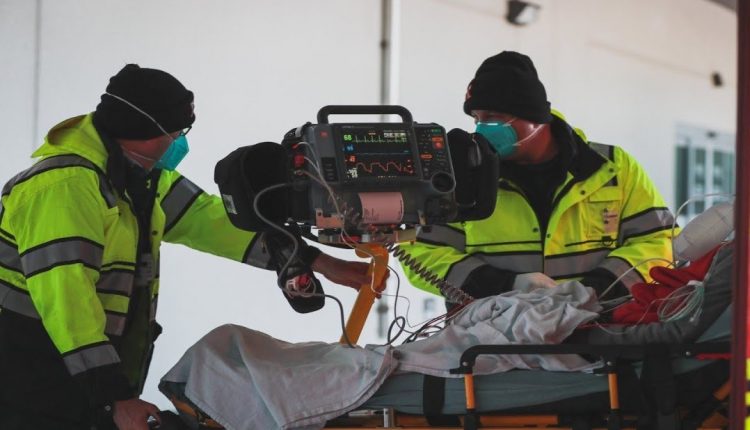
Ambulance, out-of-hospital rescue: AVPU Scale, meaning and correspondence with Glasgow Coma Scale
The acronym ‘AVPU’ in medicine refers to a scale for assessing the state of consciousness of a patient, which is mainly used in the case of out-of-hospital rescue, e.g. when a paramedic intervenes at the scene of a road accident and finds an unconscious person
The AVPU scale is a simplified alternative to the more famous Glasgow Coma Scale
Ambulance rescuers generally use the simple and straightforward AVPU scale, while doctors and nurses more frequently use the Glasgow Coma Scale.
The AVPU is an acronym made up of four letters, each indicating the severity of a patient:
- alert (alert patient): the patient is awake and conscious; this state is assessed positively if the patient can clearly answer very simple questions such as “What is your name?” or “What happened to you?”;
- verbal (patient with verbal response): the patient also responds by moving the eyes or with motor acts but only to verbal stimuli, i.e. if called, whereas without stimuli he appears drowsy or confused;
- pain (pain-responsive patient): the patient does not respond to verbal stimuli but only to painful stimuli by shaking (in the non-traumatised patient) and/or pinching the base of the neck.
- unresponsive (non-responsive patient): the patient responds to neither verbal nor painful stimuli, thus being considered completely unconscious.
AVPU, simplifying:
- alert means a conscious and lucid patient;
- verbal refers to a patient who is semi-conscious and reacts to vocal stimuli with whispers or strokes;
- pain refers to a patient who reacts only to painful stimuli;
- unresponsive refers to an unconscious patient who does not respond to any kind of stimulus.
Proceeding from A to U the severity status increases: the ‘alert’ patient is the least severe, while the ‘unresponsive’ patient is the most severe.
When is the assessment of the AVPU state of consciousness performed?
The AVPU state of consciousness is generally the first factor (or one of the first) to be considered by a rescuer when confronted with a trauma victim who is in a state of partial consciousness or unconsciousness.
We remind the reader that the state of consciousness is not to be confused with the state of awareness: a patient may be conscious and responsive but not be aware of, for example, where he or she is.
The AVPU is used specifically for the neurological assessment performed at point D of the ABCDE rule.
The four different severity grades of the AVPU scale correspond to a different Glasgow Scale score:
the “alert” patient corresponds to the patient with Glasgow Coma Scale score 14-15
the “verbal” patient corresponds to the patient with Glasgow Coma Scale score 11-13
the “pain” patient corresponds to the patient with Glasgow Coma Scale score 6-10
the “unresponsive” patient corresponds to the patient with Glasgow Coma Scale score 3-5.
Read Also:
Emergency Live Even More…Live: Download The New Free App Of Your Newspaper For IOS And Android
Post-Arrest Temperature Management In Children
Basic Life Support (BTLS) And Advanced Life Support (ALS) To The Trauma Patient
Cincinnati Prehospital Stroke Scale. Its Role In Emergency Department
How To Rapidly And Accurately Identify An Acute Stroke Patient In A Prehospital Setting?
Cerebral Haemorrhage, What Are The Suspicious Symptoms? Some Information For The Ordinary Citizen
ABC, ABCD And ABCDE Rule In Emergency Medicine: What The Rescuer Must Do
Rapid Blood-Pressure Lowering in Patients with Acute Intracerebral Hemorrhage
Tourniquet and intraosseous access: massive bleeding management
How to rapidly and accurately identify an acute stroke patient in a prehospital setting?
Glasgow Coma Scale (GCS): How Is A Score Assessed?
Pediatric Glasgow Coma Scale: Which GCS Indicators Change In The Paediatric Coma Scale



